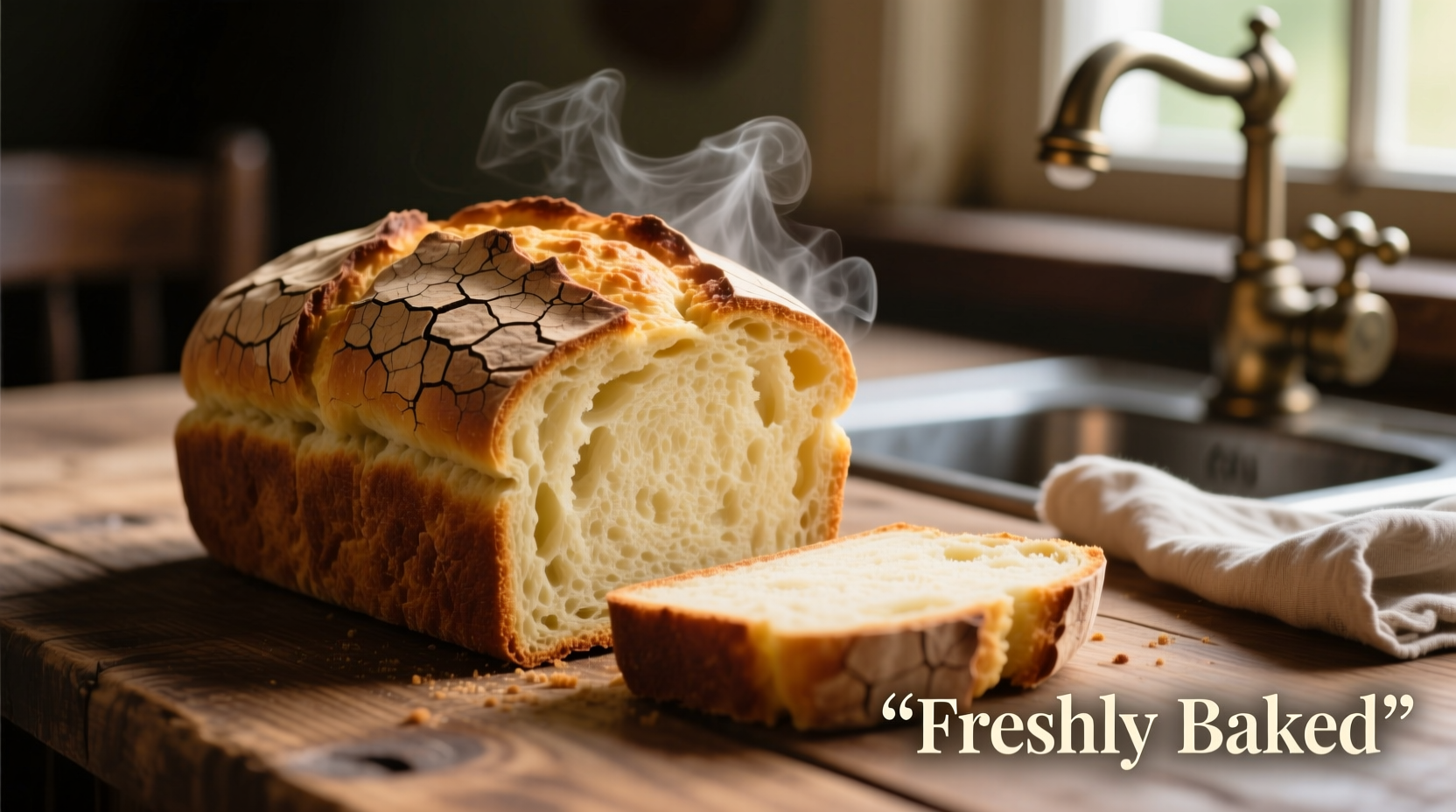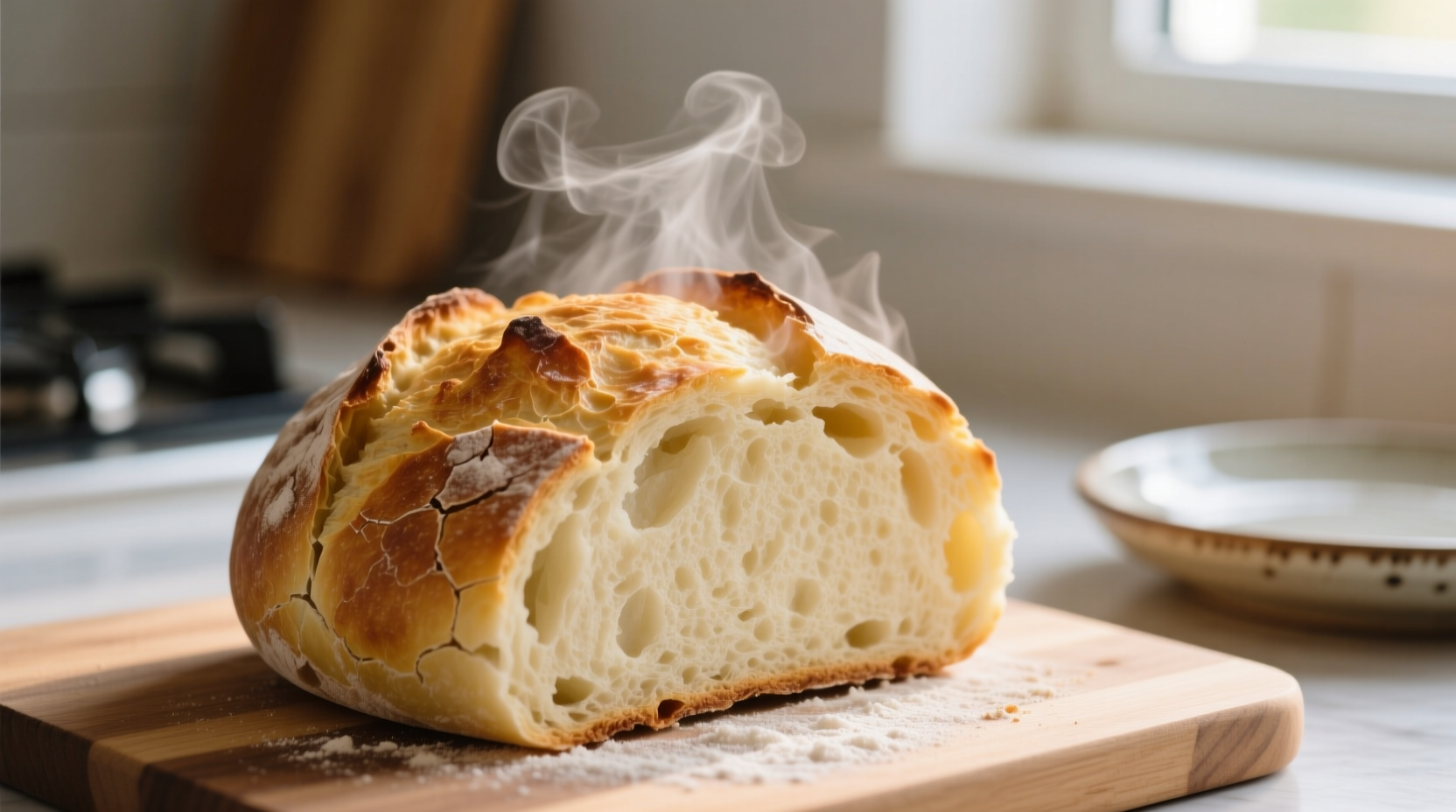The Science Behind Potato Bread's Superior Texture
Potato bread's distinctive qualities stem from the starch composition in potatoes. When incorporated into dough, potato starch absorbs more water than wheat flour alone, creating a naturally moist crumb that stays fresh longer. According to research from the USDA Agricultural Research Service, potato starch granules swell at lower temperatures than wheat starch, which affects gluten development and results in a more tender texture.

Global Variations of Potato Bread Through History
Potato bread has evolved across cultures as a practical solution to bread shortages and a way to extend precious wheat supplies. The timeline below shows how different regions adapted this staple:
| Time Period | Region | Development |
|---|---|---|
| Late 18th century | Ireland | Potato introduced as bread extender during wheat shortages |
| 19th century | Poland | Kartacze (potato dumplings) evolved into bread applications |
| Early 20th century | United States | Commercial bakeries adopted potato flour for shelf-life extension |
| Present day | Global | Artisanal variations incorporating sweet potatoes and heirloom varieties |
Nutritional Profile: Potato Bread vs. Traditional Wheat Bread
While both bread types provide carbohydrates, potato bread offers distinct nutritional advantages. Data from the USDA FoodData Central reveals important differences:
| Nutrient (per 100g) | Potato Bread | White Wheat Bread | Benefit |
|---|---|---|---|
| Moisture content | 38-42% | 35-37% | Longer freshness without preservatives |
| Vitamin B6 | 0.25mg (15% DV) | 0.08mg (5% DV) | Enhanced metabolism support |
| Potassium | 180mg | 100mg | Better electrolyte balance |
| Glycemic index | 65-70 | 70-75 | Slightly slower blood sugar impact |
Perfect Potato Bread: Essential Techniques for Home Bakers
Creating exceptional potato bread requires understanding the specific chemistry involved. Professional bakers at the King Arthur Baking Company emphasize these critical steps:
Potato Preparation Methods Compared
The way you prepare potatoes significantly impacts your final product:
- Boiled and mashed potatoes - Provides maximum moisture but requires careful measurement to avoid soggy dough
- Potato water substitution - Using the starchy cooking water instead of regular water adds flavor without altering hydration
- Instant potato flakes - Most consistent results for beginners (¼ cup flakes = 1 cup mashed potatoes)
Ideal Ingredient Ratios for Beginners
For reliable results, maintain these proportions in your potato bread recipe:
- Flour to potato ratio: 3 cups flour to 1 cup mashed potatoes
- Hydration level: 65-70% (potatoes count toward total liquid)
- Yeast amount: Slightly less than regular bread (potatoes feed yeast)
- Salt: Maintain standard 2% of flour weight
Troubleshooting Common Potato Bread Problems
Even experienced bakers encounter issues with potato bread. Understanding context boundaries helps prevent these common problems:
Dense or Gummy Texture
Cause: Excess moisture from potatoes or underbaked center
Solution: Reduce liquid by 10-15% when using fresh potatoes; check internal temperature (190-200°F/88-93°C) before removing from oven
Poor Rise
Cause: Overactive yeast from potato sugars or insufficient gluten development
Solution: Use slightly less yeast (25% reduction); ensure proper kneading to develop gluten structure
Crumbly Texture
Cause: Inadequate binding from potato starch or improper cooling
Solution: Allow bread to cool completely (2+ hours) before slicing; consider adding 1-2 tablespoons vital wheat gluten
Maximizing Shelf Life and Culinary Applications
Potato bread's natural moisture retention makes it ideal for specific culinary uses where regular bread would dry out:
- Sandwich bread - Maintains structural integrity with wet fillings better than standard bread
- Bread pudding base - Absorbs custard without becoming mushy
- French toast - Holds up to soaking while providing tender interior
- Freezing - Slices beautifully after freezing with minimal texture loss
For optimal storage, keep potato bread in a paper bag inside a plastic container at room temperature for 4-5 days. Avoid refrigeration, which accelerates staling. For longer preservation, slice before freezing and thaw individual slices as needed.
Frequently Asked Questions
Can I substitute potato flour for regular flour in any bread recipe?
No, direct substitution doesn't work well. Potato flour should replace only 10-25% of wheat flour in most recipes. Higher percentages require significant adjustments to liquid content and rising time due to potato starch's different water absorption properties.
Why does my potato bread collapse after baking?
This typically happens when excess moisture from potatoes creates steam that escapes too quickly during cooling. Ensure your oven temperature is accurate, avoid opening the oven during baking, and let the bread cool gradually in the turned-off oven with the door slightly ajar for the first 10 minutes.
Is potato bread suitable for people with gluten sensitivity?
Traditional potato bread contains gluten unless specifically made with gluten-free flours. The potato component doesn't reduce gluten content. For gluten-free versions, you'll need a dedicated gluten-free recipe using potato starch as part of a flour blend, not as a supplement to wheat flour.
What's the best potato variety for making bread?
Russet potatoes work best due to their high starch and low moisture content. Yukon Golds can be used but may require slightly less added liquid. Avoid waxy potatoes like red potatoes, which contain less starch and more water, potentially creating a gummy texture in your bread.











 浙公网安备
33010002000092号
浙公网安备
33010002000092号 浙B2-20120091-4
浙B2-20120091-4